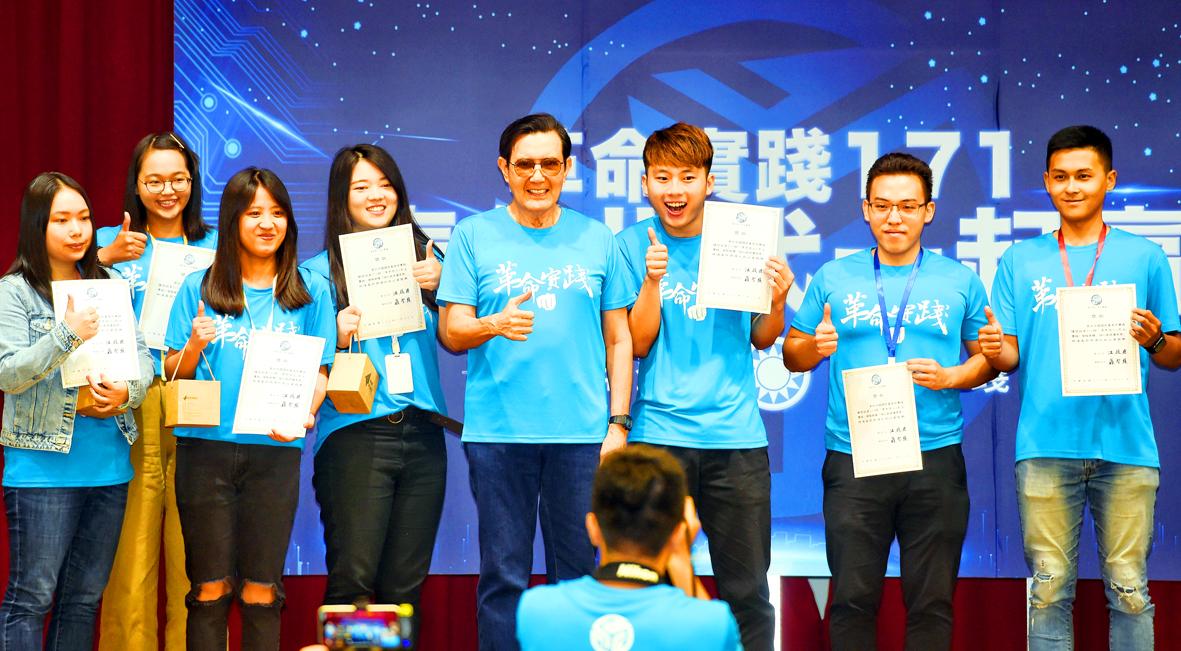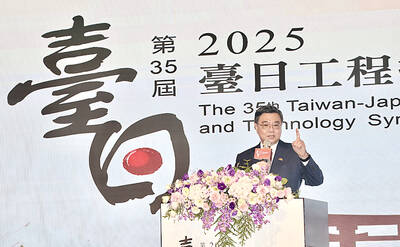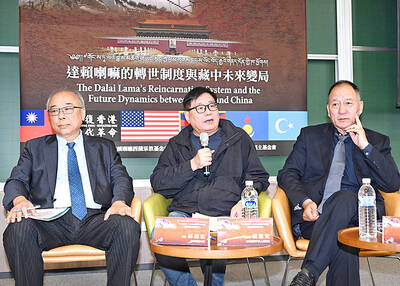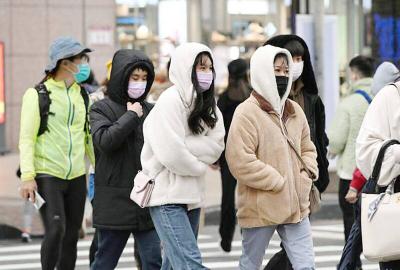Former president Ma Ying-jeou (馬英九) yesterday called on critics of the so-called “1992 consensus” to propose a feasible alternative, and urged Beijing to accept the “complete” version of the “consensus” if it is to advocate it.
Recently, the “1992 consensus” has been a popular topic within the Chinese Nationalist Party (KMT), Ma said, calling the discussion a “healthy sign” of the party’s willingness to reflect.
While many people have said they want Beijing to face the reality of the Republic of China’s (ROC) existence, it would be “impossible” for Beijing to “hold a press conference announcing that the Republic of China really exists,” Ma said.

Photo: Fang Pin-chao, Taipei Times
The “1992 consensus,” a term former Mainland Affairs Council chairman Su Chi (蘇起) in 2006 admitted making up in 2000, refers to a tacit understanding between the KMT and the Chinese Communist Party that both sides of the Taiwan Strait acknowledge there is “one China,” with each side having its own interpretation of what “China” means.
Ma said the “consensus” was the most circumlocutory way of achieving the goal of bringing China to concede the ROC’s existence.
Ma said people who propose changing the “1992 consensus” or oppose it should propose an “equally feasible alternative plan.”
In the meantime, the KMT should work to “de-stigmatize” the “consensus,” he said.
Chinese President Xi Jinping’s (習近平) mention of the “1992 consensus” in his speech on Jan. 2 last year was “a bit different from what we usually hear,” Ma said.
His comments in that speech gave President Tsai Ing-wen (蔡英文) an opportunity to say that the “consensus” means “one country, two systems,” he said, adding that they had also had a great impact on the KMT’s performance in the subsequent elections.
The KMT must clarify that the “consensus” does not equal “one country, two systems,” he said.
Ma said that Beijing seems unwilling to accept the “each side having its own interpretation” part of “one China, with each side having its own interpretation,” attacking the provision on numerous occasions.
If the Chinese government is to advocate the “1992 consensus,” it must be the “complete 1992 consensus,” he said, adding that without “each side having its own interpretation,” there was no “one China,” and no “consensus.”
Ma made the remarks at the closing ceremony of a two-day workshop at the KMT Institute of Revolutionary Practice in Taipei.
Ma is a former participant of the workshop — now in its 171st session — as are former vice president Wu Den-yih (吳敦義) and former KMT chairwoman Hung Hsiu-chu (洪秀柱).
Additional reporting by Shih Hsiao-kuang

ALIGNED THINKING: Taiwan and Japan have a mutual interest in trade, culture and engineering, and can work together for stability, Cho Jung-tai said Taiwan and Japan are two like-minded countries willing to work together to form a “safety barrier” in the Indo-Pacific region, Premier Cho Jung-tai (卓榮泰) yesterday said at the opening ceremony of the 35th Taiwan-Japan Modern Engineering and Technology Symposium in Taipei. Taiwan and Japan are close geographically and closer emotionally, he added. Citing the overflowing of a barrier lake in the Mataian River (馬太鞍溪) in September, Cho said the submersible water level sensors given by Japan during the disaster helped Taiwan monitor the lake’s water levels more accurately. Japan also provided a lot of vaccines early in the outbreak of the COVID-19 pandemic,

Kaohsiung Mayor Chen Chi-mai (陳其邁) on Monday announced light shows and themed traffic lights to welcome fans of South Korean pop group Twice to the port city. The group is to play Kaohsiung on Saturday as part of its “This Is For” world tour. It would be the group’s first performance in Taiwan since its debut 10 years ago. The all-female group consists of five South Koreans, three Japanese and Tainan’s Chou Tzu-yu (周子瑜), the first Taiwan-born and raised member of a South Korean girl group. To promote the group’s arrival, the city has been holding a series of events, including a pop-up

TEMPORAL/SPIRITUAL: Beijing’s claim that the next Buddhist leader must come from China is a heavy-handed political maneuver that will fall flat-faced, experts said China’s requirement that the Dalai Lama’s reincarnation to be born in China and approved by Beijing has drawn criticism, with experts at a forum in Taipei yesterday saying that if Beijing were to put forth its own Dalai Lama, the person would not be recognized by the Tibetan Buddhist community. The experts made a remarks at the two-day forum hosted by the Tibet Religious Foundation of His Holiness the Dalai Lama titled: “The Snow Land Forum: Finding Common Ground on Tibet.” China says it has the right to determine the Dalai Lama’s reincarnation, as it claims sovereignty over Tibet since ancient times,

Temperatures in some parts of Taiwan are expected to fall sharply to lows of 15°C later this week as seasonal northeasterly winds strengthen, the Central Weather Administration (CWA) said today. It is to be the strongest cold wave to affect northern Taiwan this autumn, while Chiayi County in the southwest and some parts of central Taiwan are likely to also see lower temperatures due to radiational cooling, which occurs under conditions of clear skies, light winds and dry weather, the CWA said. Across Taiwan, temperatures are to fall gradually this week, dropping to 15°C to 16°C in the early hours of Wednesday